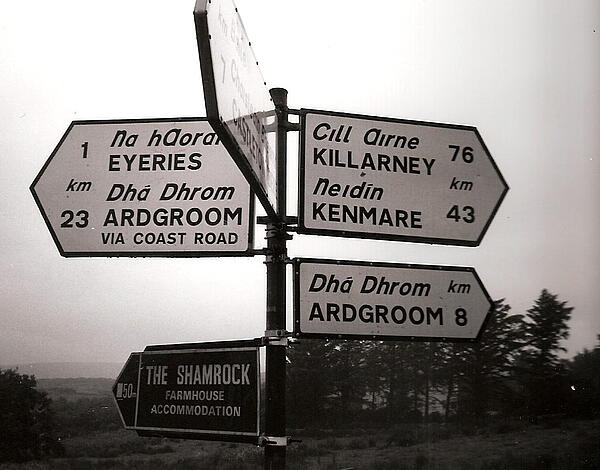Ireland and Place Names
Ireland’s place name history can be tracked back to Gaelic Ireland, which was in existence from the prehistoric era all the way through until the 17th Century. However, there are many place names that have been anglicised following English colonisation, including Ireland itself. This was once ‘Eire’ or ‘western place’, but Anglicisation led to Ireland, which means ‘land of Eire’.
Names of Gaelic Irish origin are known for having specific characteristics. An example include the word ‘down’, which means ‘fortress’ and has origins in the word ‘dun’. In fact, Dundrum means ‘fortress on the long hill’.
There are also many Irish towns with the word ‘bally’ included in their name. ‘Bally’ translates to ‘town’, so Ballymena means ‘middle town’, Ballycastle means ‘town by the castle’ and Ballymoney means ‘town with shrubbery’.

The meanings of other well-known Irish towns include:
- Monaghan means ‘little shrubbery’.
- Belfast means ‘ford at the sandy bank’.
- Carrickfergus means ‘rock of Fergus’.
- Larne is named after a legendary figure called Lathair.
- Derry means ‘oak wood’.
- Sligo means ‘abounding in shells’ and refers to the original name of the local river, ‘Sligeach’.
After the Irish Free State was founded in 1922, some English names in the Republic of Ireland were changed back to their original Gaelic form. In fact, in most cases the original Irish Gaelic name became the only official name. An example of this would be in Kingstown, which was returned to it’s original name Dún Laoghaire in both languages. This was also the case in Newbridge, which returned to Droichead Nua, Parsontown, which returned to Birr, and Philipstown, which returned to Daingean.
See also:
MLA Citation/Reference
"Ireland and Place Names". HistoryLearning.com. 2025. Web.
